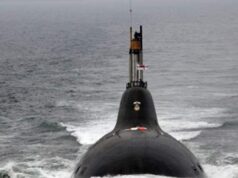Will the UN go the same way as the League of Nations ?

By Gamini Akmeemana
Even if the UN is not in danger of breaking up like the League, the UN looks powerless when dealing with the Israeli onslaught on the Gaza Strip.
The United Nations was established after World War II because its predecessor, the League of Nations, failed to prevent World War II from breaking out in 1939.
The victorious Allies (Western powers and Soviet Russia) felt the need for a more capable world body to deal with future conflicts and maintain world peace. The United Nations Charter was signed in San Francisco, the United States, on June 26, 1945, less than two weeks after Germany surrendered unconditionally on the seventh of May 1945. Interestingly, World War II was still going on, as Japan surrendered only on the second of September after two atomic bombs were dropped on Hiroshima and Nagasaki in August.
The UN had 51 member states when it started. Today, it has 193 members. Palestine has recently been recognised by many countries, but is not a UN member state. It holds the status of a non-member observer state. Which can participate in UN proceedings but does not have voting rights in the General Assembly or other main organs.
This points to the stark limitations the UN faces today in a volatile world, with one member state (Israel) clearly violating the UN’s Charter and getting away with it, making the UN look impotent. But this giant, multi-faceted organisation has had a number of peacekeeping successes in the past. Peacekeeping missions are one factor which marks out the UN from its predecessor.
The UN has conducted 72 peacekeeping operations since 1948. Currently, there are 12 ongoing operations. These missions have involved over 2 million personnel from 124 countries over the past 75 years. Among notable successes have been Namibia (1989-1990), Cambodia (1992-93), Mozambique (1992-1994), El Salvador (1991-1995), Sierra Leone (1999-2005), Timor Leste (1999-2002), Liberia (2003-2018), and Burundi (2004-2017).
But the UN has been glaringly unsuccessful in easing the unspeakable suffering in Gaza since Israel began its military operations, post October 2023. Let alone putting a peacekeeping force in place, it has not been able to ensure essential supplies of food, medicine and water to Gaza, and to keep a check on the ferocious Israeli bombing. This is because the US is a key Israel supporter, and the EU has, by and large, followed suit. Apart from mild sanctions such as banning a number of violent Israeli settlers from entry to the US, UK, Australia and the European Union, and condemning Israel for genocide at the Hague, nothing significant has been done to check what is now widely recognised as Israel’s genocidal policies in Gaza.
In an ever-violent world with several explosive scenarios, this impotence of the UN paints a disturbing picture of world peace and stability in the foreseeable future.
Will the UN perish like the League of Nations? Let’s look at what happened to its predecessor.
Like the UN, the League of Nations was established after a world war (WWI, 1914-18) to prevent future wars. American President Woodrow Wilson is credited with the idea. But politicians from France, Britain and South Africa, too, contributed to it. Wilson’s contribution was to insist that the League Covenant (list of rules) should be included in each of the separate peace treaties, which ensured that the League actually existed as a force instead of being limited to paper.
Many were optimistic about the League through the 1920s. South African statesman Jan Smuts paid it a glowing tribute. It had 42 member states at the start, and consisted of a general assembly, the Council with four permanent members (Britain, France, Italy and Japan), the Permanent Court of International Justice and the Secretariat. In addition, there were commissions and committees, with commissions handling military affairs, minority groups and disarmament, and committees for international labour, health, child welfare, drug problems and women’s rights.
It should be noted, however, that all four permanent members were colonial powers and empires, and Italy and Japan had ambitious plans for further expansion. Besides, the exclusion of defeated Germany, a major European power now faced with heavy war reparations, did not sit well for the future. Germany joined only in 1926 and left in 1933.
In some areas, the League was quite successful. The International Labour Organisation (ILO), under its French socialist director Albert Thomas, persuaded governments all over the world to fix a maximum working day and week, to specify adequate minimum wages and introduce sickness and unemployment benefits and old age pensions.
The Refugee Organisation, led by Norwegian explorer Fridtjof Nansen, expedited the return of 500,000 former prisoners of war marooned in Russia after the end of WWI. After 1933, it helped thousands fleeing Nazi persecution in Hitler’s Germany. The Health Organisation sought to curb epidemics and successfully ended a typhus epidemic in Russia.
But the Disarmament Commission failed to persuade member states to reduce the arms buildup. Germany, which began an ambitious rearming programme under Adolf Hitler, simply quit the League under another pretext and began a clandestine military training programme with Joseph Stalin’s USSR, which joined the League only in 1934.
The League also managed to settle several political disputes in the early 1920s. It managed to settle the dispute between Sweden and Finland over the Aaland Islands and the dispute over Upper Silesia between Germany and Poland. When Greece invaded Bulgaria in 1922, the League intervened swiftly, and Greece was made to pay reparations. When Turkey claimed the province of Mosul, part of the British-mandated territory of Iraq, the League decided in favour of Iraq. It settled disputes in Latin America, too, between Peru and Colombia and between Bolivia and Paraguay.
But all these were disputes between relatively powerless countries (neither Turkey nor Germany were militarily strong after their WWI defeat). When it came to clashes between powerful countries, the League fell short of what was desired. It suffered a serious setback right at the start when, in March 1920, the US Senate rejected both the Versailles Treaty (which dictated peace terms to Germany in 1918) and the League. One reason was that the Republicans, now a majority in the Senate, strongly opposed Democrat Woodrow Wilson. Secondly, many Americans wanted a return to their pre-war isolationist policy.
Though each member state was required to supply troops and equipment in case of a crisis, a resolution passed in 1923 stated that each member would decide for itself whether or not to fight in a crisis. This made no sense of the idea of collective security. Quarrels between Britain’s Labour and Conservative parties left the League further weakened. Without the US, Germany, and the USSR (admitted only in 1934), the League was mainly a Franco-British union, but British Conservatives were wary of the League and preferred to sign treaties outside of it.
Though events ran smoothly between 1925-30, it was downhill starting from the 1929 world economic crisis, which brought to power extreme right-wing governments to power in Germany, Japan and Italy. In 1931, Japanese troops invaded Manchuria. China appealed to the League, which ordered Japan to withdraw its troops. The League’s commission suggested that Manchuria be governed by the League as a compromise. Japan rejected this and left the League, which had no answer to this act of defiance.
The failure of the 1932-33 World Disarmament Conference was another blow. Germany, now under Hitler, left the League when its conditions weren’t met. Italy’s invasion of Ethiopia (then called Abyssinia) in October 1935 was a serious blow. Britain and France, seeking to keep Mussolini as an ally against Hitler, imposed half-hearted sanctions. Mussolini occupied Ethiopia and moved closer to Hitler. Small states lost all faith in the League, and Hitler, seeing its powerlessness, did not hesitate to break the Versailles treaties. No one took the League seriously after 1935. Italy left it in 1936 and, during the Spanish Civil War, which began in the same year, both Italy and Germany sent military aid to the fascists, ensuring their victory. World War II was only a step away.
The UN is not in danger of breaking up like the League. But, just as the League was powerless to act when Japan invaded Manchuria, the UN looks powerless when dealing with the Israeli onslaught on the Gaza Strip. Nor can it deal effectively with Israel’s bombing of Iran.
A sobering fact—it’s based in the US and is funded by the US. In 2023, approximately 25% of its funding came from the US.
In other words, with someone like Donald Trump in charge, the UN is sitting on a powder keg.




